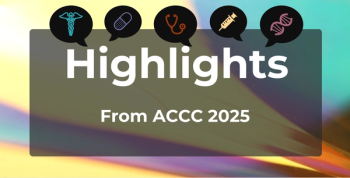
Federal Agencies Address the Dual Crises of Pain and Opioid Addiction
In a Tuesday panel discussion at The American College of Rheumatology’s 2017 Annual Meeting in San Diego, California, representatives from HHS, the National Institutes of Health (NIH), and the CDC outlined ongoing federal initiatives to address the parallel problems of pain and opioid addiction.
In a Tuesday panel discussion at The American College of Rheumatology’s 2017 Annual Meeting in San Diego, California, representatives from HHS, the National Institutes of Health (NIH), and the CDC outlined ongoing federal initiatives to address the parallel problems of pain and opioid addiction.
HHS
Vanila Singh, MD, MACM, chief medical officer of Office of the Assistant Secretary of Health at HHS, began her remarks by itemizing the 5 prongs of HHS’ plan to address the problem of opioid addiction: improving access to treatment and recovery services; promoting the use of overdose-reversing drugs; strengthening the current understanding of the opioid epidemic through public health surveillance; providing support for research on pain and addiction; and advancing better practices for pain management.
In order to address these objectives, HHS convened a conference on pain that developed the National Pain Strategy. The strategy seeks to address the following:
- The prevention of and care for long-term pain.
- Service delivery and payment. Singh said that there are “treatment modalities right now that would help the experience patients have in the perioperative realm, the acute pain realm…[and the] chronic pain realm” that are difficult to gain reimbursement for. Developing evidence to present to health plans will be key in gaining reimbursement. Additionally, efforts are underway to develop a standardized, consistent, comprehensive pain assessment and outcomes measures across the continuum of pain.
- Professional education and training. “We want [pain] to be in the purview of our young medical residents,” said Singh. To this end a pain education portal is under development.
- Public education and communication. Singh indicated that the public often feels that citizens have little input with policy makers, but that there is “a willing public as well as private sector that is willing to communicate about issues of pain.”
- Population research. Estimating the prevalence of chronic pain is critical to better understanding pain’s impact.
HHS is assembling a Pain Management Task Force to help implement its strategy, and stakeholders, as mandated by Congress, include prescribers, pharmacists, medical organizations, veterans’ organizations, first responders, patients and patient groups, state medical boards, hospital associations, addition community centers, representatives from rural America, and representatives from minority health populations.
NIH
Linda Porter, PhD, director of the Office of Pain Policy at the NIH, explained that the NIH’s current efforts to address pain “…did start because of the opioid crisis, but they’re mostly related to pain, what we know about pain, and how we care for pain. It’s hard to separate the opioid crisis from the pain crisis, but we certainly are riding a wave [of public awareness] right now.”
The NIH is currently engaged in the Federal Pain Research Strategy that is determining priorities for research into pain. Porter reports that the top 5 areas that the NIH deems to be most impactful overall are as follows:
- Determining the association between patient and intervention factors and psychosocial interventions
- Understanding heterogeneity of the circuitry involved in acute pain sensation and modulation
- Understanding and addressing plasticity mechanisms that promote persistent pain and endogenous resolution mechanisms that may reverse persistent pain
- Determining mechanisms that sustain or resolve chronic pain, and determining which elements can be intrinsically and extrinsically modulated
- Investigating biological, psychological, and social mechanisms that contribute to population group differences in chronic pain
Additionally, the 5 areas believed to be of the greatest near-term value are the following:
- Optimizing public health strategies to educate patients on managing pain
- Understanding cellular mechanisms of heterogeneity in acute pain sensation
- Understanding and addressing plasticity mechanisms that promote persistent pain and endogenous resolution mechanisms that may reverse persistent pain (as included in the above list)
- Determining optimal safe and effective chronic pain management
- Better defining the epidemiology of pain in disparate populations
Ultimately, “Better-quality pain management is really crucial to helping reduce our reliance on opioids,” said Porter. In global terms, “more than 50% of the global disease burden [has a] contribution of some pain disorder…we have an opioid problem, and we have a pain problem, and we need a balance of how we manage pain and not deny people who need medication for their particular conditions…They need better care and they need safer medications.”
Porter also indicated that the NIH is currently working together with pharma to promote development of safe and effective pain management therapies.
CDC
Chad Helmick, MD, medical epidemiologist arthritis program at the CDC, said that the opioid crisis is “…really a dysfunctional pain management system. Why focus on pain? The numbers tell the story,” he said, reporting that 25.3 million adults (11.2% of the population) in the United States have daily pain, and 14.4 million have severe pain (6.4% of the population). “The system is not working for these people very well.”
Rheumatologic conditions account for a great many cases of pain, says Helmick, who indicated that 50% of adults who have been issued prescriptions for opioids have arthritis. Similarly, current methods of treating pain associated with rheumatic disease are related to the growing problem of opioid addiction: “We have a variety of evidence-based [therapies]” outside of opioids, he said, referring to physical activity, self-management education, and physical therapy, “But we don’t use them.”
The good news, says Helmick, is that there is growing momentum to address both pain and addiction. The Healthy People 2020 initiative has included developmental objectives for pain, including decreasing the prevalence of adults who have high-impact chronic pain, and the 2016 National Health Interview Survey included 2 questions geared toward better understanding the incidence and impact of chronic pain.
Newsletter
Stay ahead of policy, cost, and value—subscribe to AJMC for expert insights at the intersection of clinical care and health economics.









































